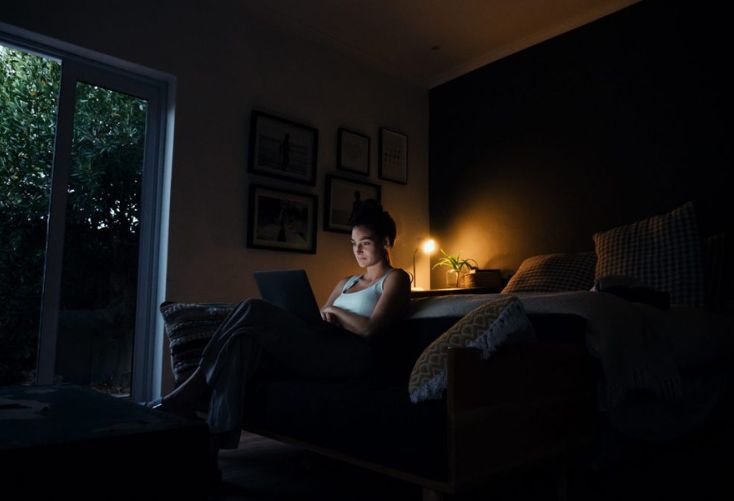- Light plays an important role in our overall health and wellbeing, including the circadian rhythm, which is important for our eating and sleeping patterns.
- With hybrid work now a permanent feature of working life for many people, how do different lighting conditions at home and in the office vary?
- CallisonRTKL’s Kyle A. D. McGahan and Andres Gonzalez-Bode explore the impact of light and how the integration of lighting controls should be considered within workspace design.
This article was written by Kyle A. D. McGahan & Andres Gonzalez-Bode, and was originally published on Work Design Magazine.
Ever since the declaration that Covid-19 was a pandemic in 2020, the focus on human well-being in the built environment has dramatically expanded across multiple industries. The resulting “work-from-home” (WFH) transformation that occurred across broad swaths of the economy during the early months of the pandemic brought the seriousness of human health and well-being home for millions, and laid bare for many, the health concerns that an overconnected “constantly on” 24-hour society and its detachment from the natural world can have on mental health, disrupted circadian rhythms, and sleep deprivation.
Lighting controls, material specification, and spatial relationships with light sources across time should be integral to any conversation about circadian lighting design outcomes.
Natural light is critical for a healthy circadian rhythm, which is important for a person’s eating and sleeping patterns. If a hybrid work model is the new normal for office workers, how might different lighting conditions at home and in the office vary, and what are the implications for human health and well-being? Our lighting design studio recently set out to understand circadian lighting considerations for human health and well-being. Lighting controls, material specification, and spatial relationships with light sources across time should be integral to any conversation about circadian lighting design outcomes.
Understanding Lighting Variations and Its Biological Impact
People’s lighting conditions are significantly varied when working from home, and there is a high degree of variation in both spectrum and intensity of light exposure. In a departure from the past, today’s lighting design is more than just a collection of luminaires enabling vision and aesthetics. As the world and our profession continue to evolve, the luminous environment around us will have a biological impact on our collective health and well-being and, therefore, must be considered with the changing priorities that are demanded of the built environment and the industry at large.
Workplace design should consider the integration of lighting controls with scene changes throughout the time of day as integral to any holistic design.
Using task lights would be the most effective in either a work-from-home setting or the office environment, given their proximity to the occupant and flexibility to accommodate an individual preference for intensity, duration of use, and spectral composition. It is important to note that design considerations for workplace environments need to incorporate more strategies to create more vertically illuminated surfaces, improve views to daylight, and implement finishes that are conducive to a bright and luminous appearance. Workplace design should consider the integration of lighting controls with scene changes throughout the time of day as integral to any holistic design.

The Importance of Human-Centric Lighting
Light is a fundamental part of one’s environment. The discourse and design for “human-centric lighting” must expand the conversation beyond what we can readily see as a product feature or equipment application. To guide future lighting designs, a framework was recently proposed by Houser and Esposito’s 2021 study, Human-Centric Lighting: Foundational Considerations and a Five-Step Design Process, which prioritizes occupant needs within the context of current guidance by outlining the following:
- Characterize the lighting application
- Determine the likely sleep-wake cycle(s) of occupants
- Determine the sleep needs of the occupants
- Review published guidance to develop goals and design criteria that support visual and non-visual outcomes
- Deploy this information to establish design criteria that will guide decisions in the latter stages of the design process.
At the end of the day, designers must conduct their due diligence with the metrics being put forth for consideration. Lighting design practitioners should continue to participate in and add to these discussions, evaluate scientific implications, review expert recommendations, proceed with a commonly accepted standard of care, co-author consensus driven best-practices, engage industry adopted standards, and apply the science where and when appropriate for both the work-from-home and office settings.


 Dr. Gleb Tsipursky – The Office Whisperer
Dr. Gleb Tsipursky – The Office Whisperer Nirit Cohen – WorkFutures
Nirit Cohen – WorkFutures Angela Howard – Culture Expert
Angela Howard – Culture Expert Drew Jones – Design & Innovation
Drew Jones – Design & Innovation Jonathan Price – CRE & Flex Expert
Jonathan Price – CRE & Flex Expert












